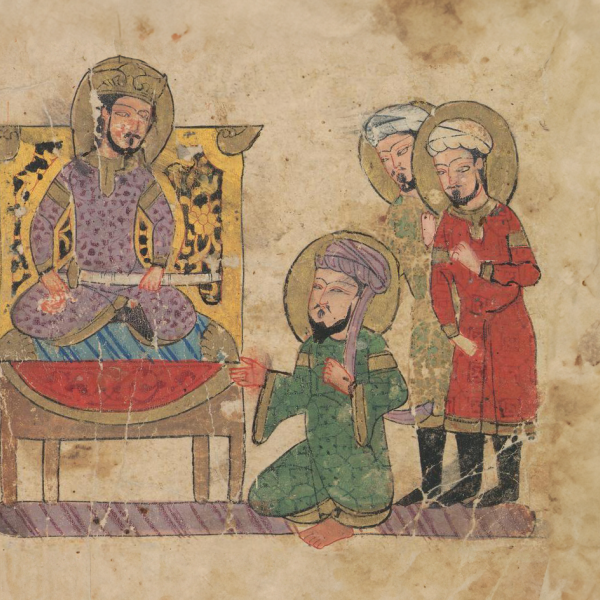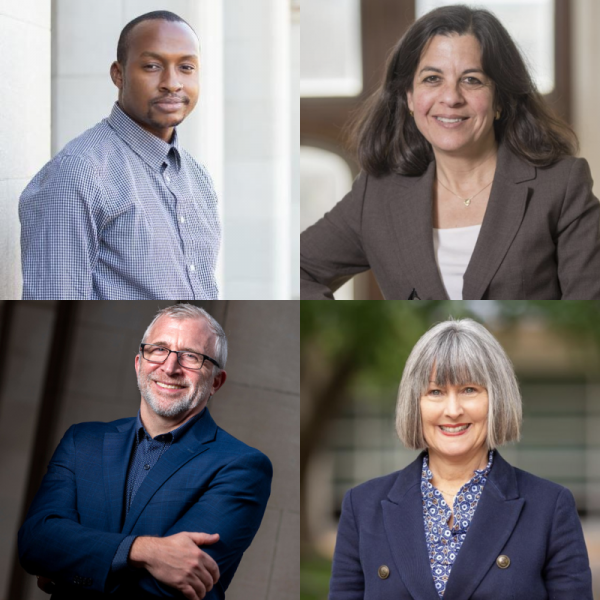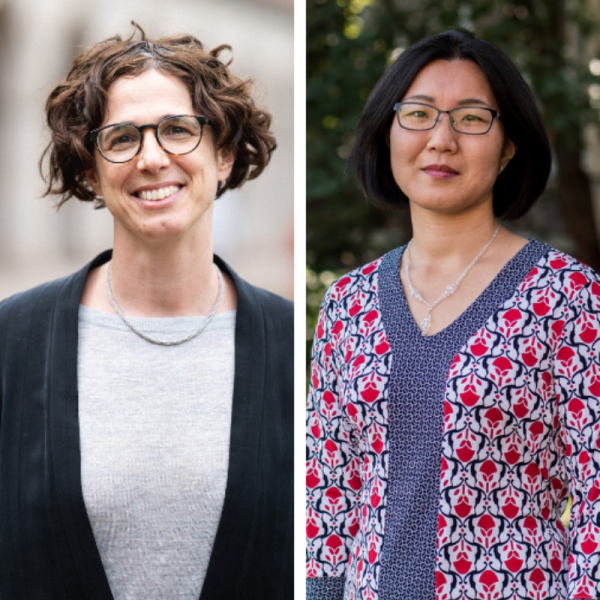Rosanne Liebermann, the Friedman Postdoctoral Fellow in Jewish Studies in the Department of Jewish, Islamic, and Middle Eastern Studies (JIMES), uses interdisciplinary methods to study ancient Judean identity.
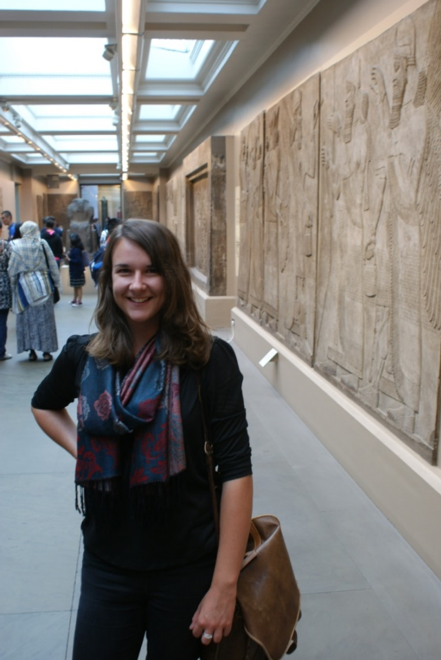
It was through an adviser at Oxford University who specialized in the Hebrew Bible that, “almost by accident really,” Rosanne Liebermann first discovered her passion for the study of ancient Hebrew scripture. Liebermann, now the Friedman Postdoctoral Fellow in Jewish Studies in the Department of Jewish, Islamic, and Middle Eastern Studies (JIMES) and an Early Career Scholar with the Center for the Humanities, decided then to pursue a degree in theology at Oxford because of the opportunity it provided to pursue an interdisciplinary education.
“In the UK system for undergraduate education, you really only do one subject,” Liebermann says. “Theology is one of the only subjects where you can study history, philosophy, religion, and languages — Hebrew and Greek.” She soon moved beyond strictly theological training to approach ancient religion from a socio-historical perspective, and went on to earn her doctorate in Hebrew Bible and Northwest Semitic Philology, the study of languages, last spring from Johns Hopkins University.
In her current project, Liebermann explores questions of Judean identity in the Book of Ezekiel, an Old Testament text documenting the trials, travails, and hopes of restoration of the Israelites during their exile and captivity in Babylon. The prophecies of Ezekiel, a priest who conducted his ministry in Babylon in the first three decades of the 6th century, B.C., are venerated in the Jewish, Christian, and Islamic traditions. The texts proved pivotal in the development of Judaism and ancient Jewish identity in the years after the Babylonian captivity. Liebermann uses the Book of Ezekiel to explore how Judean identity was negotiated during captivity, a complex process of dialogue between Babylonian culture, which greatly influenced both the practices of the Judean people in Babylon and the Hebrew language itself, and the culture of those who remained in Jerusalem.
Liebermann is at the forefront of an emerging trend of applying the methodology of social anthropologists — particularly insights from the study of the body — to the ancient world. While past scholars have focused heavily on Ezekiel’s use of Babylonian words, Liebermann is particularly interested in how identity and cultural practices were expressed through the body in “everyday” markers of identity, such as clothing and ritual. These practices offer insights into both the collective formation of Judean identity and the demarcation of individual identities within the community, based on gender, religious authority, or other markers of hierarchy.
“When we talk about the identity of a community,” Liebermann says, “It’s not just monolithic, like everyone is an elite male. Ezekiel makes it clear that ritual is very important for him as a priest.” In Babylon, removed from the temple that was once the center of Judean society, ritual served to create new demarcations of religious authority. One way in which Ezekiel asserted his own religious authority in exile was by presenting himself as the one true prophet of his age.
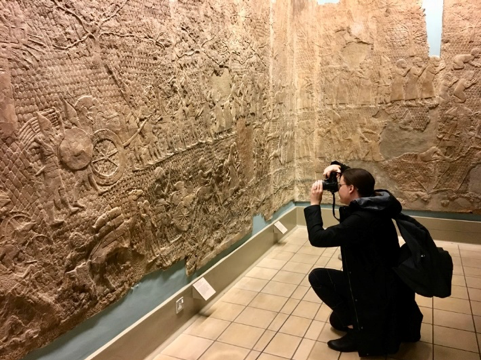
Liebermann’s source base extends beyond the text of the Book of Ezekiel to encompass the scarce fragments of the ancient world uncovered by archaeologists and left behind in the few documents extant that offer glimpses of the practices and customs of both the Babylonians and the Judeans. A fortunate cache of Babylonian economic texts, long lost in the hands of private collectors, was published in 2014 just after Liebermann started work on her project. The texts offer a rare look at the economic practices of the Judean people as they farmed the land granted to them by the Babylonian empire. She also compares accounts of bodily practices — rituals and clothing — with royal inscriptions of Assyrian and Babylonian kings. A trip to an archeological site in Turkey in 2014, an ancient Aramean temple with a similar layout to Solomon’s Temple in Jerusalem, also offered Liebermann valuable experience in working with archaeological evidence.
Liebermann is bringing her training in theology, languages, and the study of the Ancient World to WashU through her teaching, research, and broader engagement with the community. This semester she is teaching a class that poses an eye-catching question — were the Hebrew prophets voices of social justice? — as an entrée into both the critical study of prophetic works and the wider social world inhabited by prophets such as Ezekiel, Elijah, Samuel, and Jeremiah. Students study ancient Hebrew texts driven by framing questions on issues of social justice. Recent topics have included questions such as, “how would you characterize Jeremiah’s ecological outlook?”
The seminar is heavily influenced by an ongoing study of the phrase mišpāṭ ûṣědāqâ (“justice and righteousness”) in prophetic texts, in which Liebermann examines how ancient ideas about social justice were influenced by social identities within communities. While this project is fundamentally grounded in the Ancient World, Liebermann sees potential to speak to present day issues, as well. “I’m not trying to shy away from what those meanings [of justice] might have for communities today, nor am I coming from a confessional background, trying to influence anyone’s point of view,” Liebermann says. “I’m just using my expertise in ancient philology to find new meanings.”
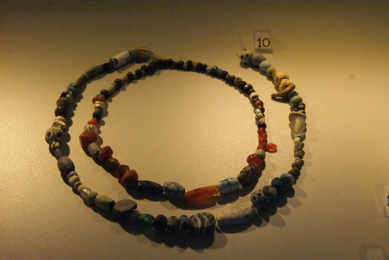
Next semester, Liebermann will teach a class on gender and sexuality in the Hebrew Bible, which will explore questions of how the ancient Israelites constructed their ideas of masculinity and femininity. She will also be giving a public presentation, titled “Material Girls,” on the role of materiality — clothes and objects — in constructions of feminine identity in the Hebrew Bible.
According to Liebermann, Washington University has offered an ideal environment for the continued development of her interdisciplinary interests. She appreciates the focus WashU has placed on the humanities and the investment the university has made in the liberal arts through institutions like the Center for the Humanities. As an early career scholar, she has found important intellectual fellowship among the center’s interdisciplinary community of postdoctoral fellows, which number about thirty. “It has been really nice to meet other people at a similar stage in our careers,” Liebermann says. “It’s so important to have interdisciplinary contact. I am friends with people in classics, modern languages, and other subjects.”
Liebermann’s own work, whether in her research or in the classroom, shows the enriching impact such interdisciplinary contacts can have. By taking an approach to scripture grounded in historical analysis, archaeological evidence, and anthropological methodology, as well as the study of language, Liebermann is demonstrating the large number of research questions Ancient Hebrew scripture can answer if scholars approach it with fresh eyes.


